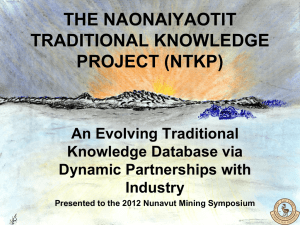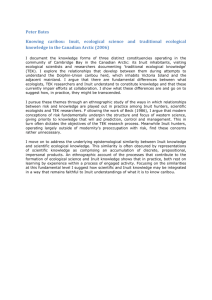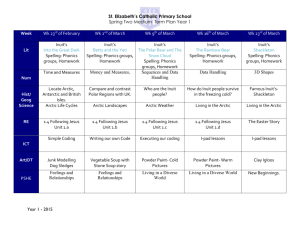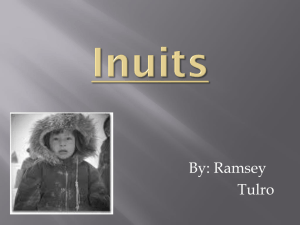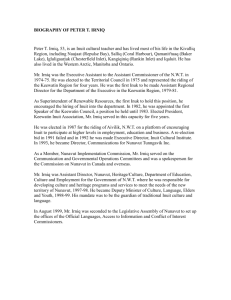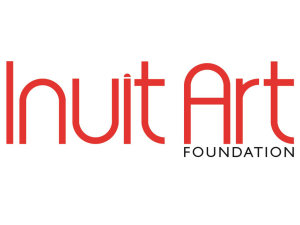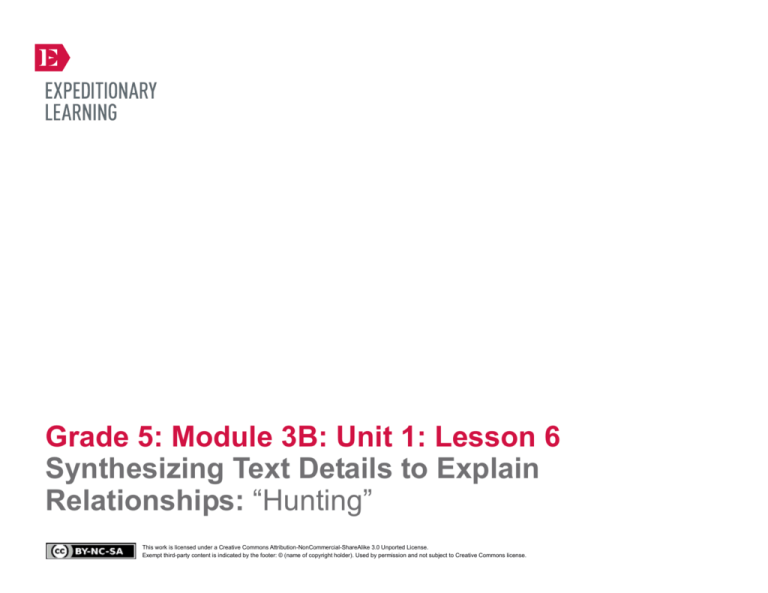
Grade 5: Module 3B: Unit 1: Lesson 6
Synthesizing Text Details to Explain
Relationships: “Hunting”
This work is licensed under a Creative Commons Attribution-NonCommercial-ShareAlike 3.0 Unported License.
Exempt third-party content is indicated by the footer: © (name of copyright holder). Used by permission and not subject to Creative Commons license.
GRADE 5: MODULE 3B: UNIT 1: LESSON 6
Synthesizing Text Details to Explain Relationships:
“Hunting”
Long-Term Targets Addressed (Based on NYSP12 ELA CCLS)
I can quote accurately from the text when explaining what the text says explicitly and when making inferences. (RI.5.1)
I can identify the relationships between two or more individuals, events, ideas, or concepts in a historical text based on specific information in the text. (RI.5.3)
I can demonstrate understanding of figurative language, word relationships, and nuances in word meanings. (L.5.5)
c. I can use the relationship between particular words to better understand each of the words.
Supporting Learning Targets
Ongoing Assessment
• I can explain the relationship between the Inuit and their natural environment, by quoting accurately
from the text.
• Letter to a Partner (from homework)
• I can determine which synonymous terms most clearly convey information about the Inuit and hunting.
• Resource Web graphic organizers: Wood and Stone
• Revised resource web in journal (from homework)
• Vocabulary cards
Copyright © 2013 by Expeditionary Learning, New York, NY. All Rights Reserved.
NYS Common Core ELA Curriculum • G5:M3B:U1:L6 • June 2014 •
1
GRADE 5: MODULE 3B: UNIT 1: LESSON 6
Synthesizing Text Details to Explain Relationships:
“Hunting”
Agenda
Teaching Notes
1. Opening
• In this lesson, students read the section titled “Hunting” from The Inuit Thought of It to further develop
their understanding of how native Inuit people adapted to life in the North American Arctic and used
resources from their natural environment to meet the needs of their community.
A. Reviewing Homework and Engaging the Reader (10
minutes)
2. Work Time
A. Visualizing the Gist: The Inuit Thought of It, Pages
22–23 (10 minutes)
B. Completing Resource Webs to Explain Relationships
(20 minutes)
C. Analyzing Synonymous Terms (15 minutes)
3. Closing and Assessment
A. Debrief and Review Learning Targets: Adding to
Resource Webs (5 minutes)
4. Homework
A. Reread pages 22–23 of The Inuit Thought of It;
record and define Inuit terms on index cards; create
a new resource web in your journal.
B. Read your independent reading book for at least 15
minutes.
Copyright © 2013 by Expeditionary Learning, New York, NY. All Rights Reserved.
• After creating a visual gist of the text, students complete two new resource webs—one about stone and
the other about wood—to help them visualize and explain native Inuit people’s relationship with and
dependence upon plant and land resources from their natural environment.
• Students continue to work with synonyms for key words from the text, in order to analyze and make
determinations about which words best convey information to the reader. This type of vocabulary work
elicits meaningful discussions among students regarding how using one word over another better
supports readers’ understanding of a text; it also helps students make determinations about effective
word choice in their writing.
• In advance:
– Create two new charts: Wood resource web and Stone resource web (see supporting materials).
– Display the class versions of the Seal, Caribou, and Walrus resource webs (from Lessons 2–5).
– Display the Group Norms anchor chart (from Lesson 1) for ongoing student reference.
– Make sure each student or group has access to a print or online edition of a thesaurus.
– Review: Popcorn protocol and Thumb-O-Meter in Checking for Understanding Techniques
(Appendix).
NYS Common Core ELA Curriculum • G5:M3B:U1:L6 • June 2014 •
2
GRADE 5: MODULE 3B: UNIT 1: LESSON 6
Synthesizing Text Details to Explain Relationships:
“Hunting”
Lesson Vocabulary
Materials
relationship, natural environment,
determine, synonymous terms, clearly,
convey; crafted, observing, quietly,
build
• Seal, Caribou, and Walrus resource webs (class versions; from Lessons 2–4)
• The Inuit Thought of It (book; one per student)
• Journal (from Lesson 1; one per student)
• Group Norms anchor chart (from Lesson 1)
• Natural Environment anchor chart (from Lesson 2)
• Wood Resource Web graphic organizer (one per student)
• Wood resource web (chart-sized; new; teacher-created; one for display)
• Wood Resource Web graphic organizer (answers, for teacher reference)
• Stone Resource Web graphic organizer (one per student)
• Stone resource web (chart-sized; new; teacher-created; one for display)
• Stone Resource Web graphic organizer (answers, for teacher reference)
• Index cards (one-hole punched; eight per student: four for vocabulary, four for homework)
• Thesaurus (one per student or small group)
• Vocabulary cards on metal ring (begun in Lesson 2; one set per student)
• Key Term Sentences (one for display)
Copyright © 2013 by Expeditionary Learning, New York, NY. All Rights Reserved.
NYS Common Core ELA Curriculum • G5:M3B:U1:L6 • June 2014 •
3
GRADE 5: MODULE 3B: UNIT 1: LESSON 6
Synthesizing Text Details to Explain Relationships:
“Hunting”
Opening
Meeting Students’ Needs
A. Reviewing Homework and Engaging the Reader (10 minutes)
• Ask students to take out the Letter to a Partner they completed for homework and quickly find a partner who is not a
member of their regular group.
• For struggling readers, allow
partners to whisper-read their own
letters to each other before writing
notes.
• Tell students they are going to participate in a form of “legal note-passing.” Give the following directions:
1.
Silently read through the Letter to a Partner that you wrote for homework.
2.
Exchange your letter with your partner.
3.
Partners read each other’s letters and write notes in the margin to ask questions and/or express something they agree or
disagree with.
4.
Be prepared to discuss the thoughts you express in your notes with your partner.
• Clarify directions as needed and then ask students to begin. Circulate to offer support and guidance.
• Provide sentence starters as needed,
to allow all students access to the
conversation. Examples: “We
agreed that …,” “We disagreed
about …,” and “The notes and
discussion with my partner helped
me better understand …”
• After 5 minutes, prompt students to complete their written notes and prepare for a partner discussion.
• Tell students to do the following:
1.
Return your partner’s letter and then silently read what your partner wrote in the margin.
2.
After you read your partner’s notes, discuss:
• Allow students who struggle with
the physical act of writing to dictate
their notes to you or another adult
to act as a scribe; or, if adequate
technology is available, allow
students to speak and record their
ideas for their partner to listen to.
• “Do you have any clarifying questions about your partner’s notes?”
• “What questions did your partner have? How can you answer your partner’s question(s)?”
• “What does your partner agree or disagree with, and why?”
• Circulate to offer support during partner discussions as needed.
• After 2 or 3 minutes, focus students’ attention whole group. Invite a few partners to share out ideas from their discussions by
posing questions such as:
* “Did the discussion with your partner help to clarify your thinking? Explain.”
* “What did you and your partner agree or disagree about? Explain.”
• After students have had an opportunity to share out thinking, direct their attention to the class Seal, Caribou, and
Walrus resource webs.
Copyright © 2013 by Expeditionary Learning, New York, NY. All Rights Reserved.
NYS Common Core ELA Curriculum • G5:M3B:U1:L6 • June 2014 •
4
GRADE 5: MODULE 3B: UNIT 1: LESSON 6
Synthesizing Text Details to Explain Relationships:
“Hunting”
Meeting Students’ Needs
Opening (continued)
• Ask students to get out their journals and turn to the resource webs they added to for homework. Then ask them, using the
Popcorn protocol, to share out ideas that could be added to each web. Record students’ thinking on the class resource webs.
• Tell students that today’s reading will continue to support their understanding of the relationship that existed between
traditional Inuit and their environment. More specifically, the text will explain how the Inuit developed innovations that
allowed them to meet the needs of their community through hunting.
Work Time
Meeting Students’ Needs
A. Visualizing the Gist: The Inuit Thought of It, Pages 22–23 (10 minutes)
• Ask students to locate their copies of The Inuit Thought of It and their journals before meeting in their groups.
• Consider pulling a group of students
who struggle to read grade-level
text, to whisper-read pages 22–23
with them and support the creation
of their visual gists.
• Review the Group Norms anchor chart as needed.
• Direct students to open their books to page 22, the section titled “Hunting.”
• Tell students to independently whisper-read pages 22–23 and then discuss in groups what they believe is the gist of these
pages.
• After 5 or 6 minutes, direct students to sketch a visual gist of pages 22–23 on a clean page in their journals.
• After 1 minute of sketching, encourage students to share their visual gist with group members.
• Invite a few students to show and explain their visual gist whole class. Listen for responses such as:
– “This section is about different hunting techniques, so I drew an Inuit man with a harpoon and a seal.”
• Consider modifying the amount of
text read by struggling readers.
Make sure the abbreviated text
selection provides enough
information to build adequate
understanding to support an
accurate visual gist.
– “This section is about how the Inuit studied animals to develop the best way to hunt them, so I drew a man watching a
polar bear hunting seals at a breathing hole and another picture of the man hunting at the breathing hole.”
• Give students 1 minute to revise their visual gists and add a gist statement to the bottom of the page in their journal, based
on ideas shared during the group discussion.
Copyright © 2013 by Expeditionary Learning, New York, NY. All Rights Reserved.
NYS Common Core ELA Curriculum • G5:M3B:U1:L6 • June 2014 •
5
GRADE 5: MODULE 3B: UNIT 1: LESSON 6
Synthesizing Text Details to Explain Relationships:
“Hunting”
Work Time (continued)
Meeting Students’ Needs
B. Completing Resource Webs to Explain Relationships (20 minutes)
• Ask students to chorally read the first learning target aloud:
• To support visual learners and
students grappling with
understanding text features (such as
subheadings, images, and captions),
help readers locate important
information, pointing directly to the
text features as students name
them, and explain how the text
features help them locate the
answer to their focus question:
“How did the harpoon meet the
needs of the Inuit?”
* “I can explain the relationship between the Inuit and their natural environment, by quoting accurately from the text.”
• Underline the familiar terms relationship and natural environment and then ask students to discuss in groups how they
could restate the target based on their understanding of key words and phrases. Cold call a few students to share out with the
class.
• Refer to the Caribou, Seal, and Walrus resource webs and invite students to explain what information these resource webs
communicate. Listen for responses such as:
– “The webs explain the items that the Inuit made from different animals they hunted from their environment.”
– “They communicate information about how Inuit people depended on the animals found in their natural environment,
such as seals or walrus, to meet their needs.”
• Point out or confirm that the resource webs students started in Lesson 2 explain how Inuit used different animals from their
environment to adapt to their environment and meet their needs, but that animals were not the only natural resources
available to the Inuit.
• Refer to the Natural Environment anchor chart and invite several students to point out other elements of the natural
environment. Listen for them to name: air, water, plants, and land.
• Tell students that today they will complete two new webs about resources from the natural environment that the Inuit used
to adapt to their environment and meet the needs of their community: stone and wood.
• On the Natural Environment anchor chart, draw a line from “plants” and record and circle the term “wood.” Then, draw a
line from “land” to record and circle the term “stone.”
• Distribute the Wood Resource Web graphic organizer to each student and display the new chart-sized class version of
the graphic organizer, the Wood resource web.
• Ask students to examine their graphic organizers and invite a few students to share their observations whole class.
• Confirm or explain that this graphic organizer is similar to the Seal, Caribou, and Walrus resource webs students created in
their journals in previous lessons, but many parts of this web have already been completed for them. Tell students they will
need to locate specific quotes from the text to complete the rest of the web accurately.
• Point out the first item created from wood: the “long shaft of a harpoon.”
• Then ask students to chorally read aloud the question in the connected box: “How did this item meet the needs of the Inuit?”
Copyright © 2013 by Expeditionary Learning, New York, NY. All Rights Reserved.
• Consider supporting a small group
of struggling readers as they
attempt to complete their Stone
Resource Web graphic organizer.
• Consider modifying the amount of
text the small group of struggling
readers is asked to read by guiding
them to use subtitles, images, and
captions to home in on the part(s) of
the text that will help them
complete the Stone Resource Web
graphic organizer.
• To provide all learners with access
to the discussion question, consider
displaying a sentence frame: “The
Inuit used the available resources
such as ______ to adapt to life in
the Arctic environment by
______.”
NYS Common Core ELA Curriculum • G5:M3B:U1:L6 • June 2014 •
6
GRADE 5: MODULE 3B: UNIT 1: LESSON 6
Synthesizing Text Details to Explain Relationships:
“Hunting”
Meeting Students’ Needs
Work Time (continued)
• Invite several students to share where in the text they might look for information to help them answer this question. Listen
for responses such as:
– “I notice there is a section called ‘Parts of a Harpoon’; there might be important information in that section.”
– “There is also a section called ‘Hunting with a Harpoon,’ and I think that might be a good place to look.”
– “There are pictures of harpoons, so maybe we could look at the captions.”
• Point out or confirm that using text structures such as subheadings, images, and captions is a good way to locate specific
information in the text.
• Direct students to refer to relevant text structures as they consider and discuss with their group members the question about
how the long shaft of the harpoon met the needs of the Inuit.
• After 1 minute, cold call a few students to share their responses aloud. Refer to the Wood Resource Web graphic
organizer (answers, for teacher reference) for possible student responses and record student ideas on the class Wood
resource web.
• Give students 1 minute to record an answer to the question on their own graphic organizers.
• Then, using the class Wood resource web, direct students’ attention to the “How did this item meet the needs of the Inuit?”
box and ask them to read aloud chorally: “This special fishing spear allowed the Inuit to pull fish out of the water through a
hole in the ice.”
• Ask students to refer to the text as they work with their group members to identify the item that could be used to complete
the connected blank box on their graphic organizers.
• After 1 minute, cold call a few students to share out. Listen for them to identify the handle of the kakivak.
• Ask students to quickly record this term in the appropriate box on their graphic organizers.
• Next, distribute a Stone Resource Web graphic organizer to each student.
• Tell students they should work with their group members to complete the Stone Resource Web graphic organizers, in the
same way they completed the Wood resource webs, by using specific details from the text.
• Clarify directions as needed. Then release students to work in their groups.
• Circulate to support student work. Remind students to use text structures to help locate relevant information.
• After 5 or 6 minutes, refocus students whole class and display the new chart-sized class version of the graphic organizer, the
Stone resource web.
Copyright © 2013 by Expeditionary Learning, New York, NY. All Rights Reserved.
NYS Common Core ELA Curriculum • G5:M3B:U1:L6 • June 2014 •
7
GRADE 5: MODULE 3B: UNIT 1: LESSON 6
Synthesizing Text Details to Explain Relationships:
“Hunting”
Meeting Students’ Needs
Work Time (continued)
• Cold call several students to share out the details they added to their Stone Resource Web graphic organizers. Refer to the
Stone Resource Web graphic organizer (answers, for teacher reference) for possible student responses; record
students’ thinking on the class Stone resource web.
• Then, redirect students’ attention to the Natural Environment anchor chart once again. Ask students to consider the anchor
chart as well as all five resource webs (Seal, Caribou, Walrus, Wood, and Stone) as they discuss the following in groups:
* “How have the Inuit used available resources to adapt to life in the Arctic environment and meet the needs of their
community?”
• After 2 or 3 minutes, cold call several students to share their thinking whole class. Listen for responses such as:
– “Life in the Arctic is very harsh, but the Inuit have learned to make protective clothing from animals, weapons from wood
and bone, lamps from stone and seal oil, and even homes from snow. By using natural resources from the environment,
Inuit adapted to and survived the harsh environment.”
• After several students have shared aloud, direct them to turn to a clean page in their journal and record the question as well
as a three-to-five-sentence response that includes quotes and paraphrased details from the text.
• As time allows, invite students to read their responses aloud to the class. Encourage students to offer specific and positive
praise about their classmates’ paragraphs.
Copyright © 2013 by Expeditionary Learning, New York, NY. All Rights Reserved.
NYS Common Core ELA Curriculum • G5:M3B:U1:L6 • June 2014 •
8
GRADE 5: MODULE 3B: UNIT 1: LESSON 6
Synthesizing Text Details to Explain Relationships:
“Hunting”
Work Time (continued)
Meeting Students’ Needs
C. Analyzing Synonymous Terms (15 minutes)
• Ask students to chorally read aloud the second learning target:
• For students who struggle with
language, allow access to
dictionaries to help them determine
the slight differences between the
meanings of synonymous terms.
* “I can determine which synonymous terms most clearly convey information about the Inuit and hunting.”
• Direct students’ attention to the phrase synonymous terms. Ask them to think about which parts of this phrase look familiar
and then discuss with group members what they think it might mean.
• After 1 minute, invite a few students to share their ideas with the class. Listen for suggestions such as:
– “I think synonymous terms are words that mean basically the same thing, because I notice the word ‘synonym’ is part of
the word ‘synonymous’ and synonyms are words that have the same/similar meanings.”
• Underline words and phrases students are familiar with from previous lessons and modules: determine, clearly, and convey.
Ask students to consider and discuss the meaning of these words with group members then decide how they could restate
the target in their own words.
• After 1 minute, cold call members from different groups to share their restated targets aloud.
• Remind students that in previous lessons they worked to determine the meaning of, and synonyms for, key terms from the
text. Then, they considered how the author of The Inuit Thought of It, Alootook Ipellie, used specific terms to clearly convey
information about how native Inuit people used resources to develop innovations that met their needs.
• Explain that today students will record and write synonyms for four of the key academic words from pages 22–23 of The
Inuit Thought of It, then they will work with group members to determine whether the author’s original word choice or a
different synonymous term would better support readers’ understanding of the information presented.
• List the key terms where all students can see: crafted, observing, quietly, and build.
• Distribute four index cards and a thesaurus to each student. Ask students to record each word on its own index card then
use the thesaurus to locate and record at least two synonyms for each key word. (Describe and model how to use a thesaurus
if necessary. Focus students on determining the root of each word and the part of speech, so they are able to locate accurate
synonymous terms.)
• For students who struggle to
express their thinking about the
meaning of key terms in written
language, allow them to draw a
pictorial representation of a
synonym for each word.
• Consider working in a separate
small group with students who may
struggle with this task.
• Second-language learners may
struggle to identify the root of the
first two key words and therefore
have difficulty looking up each term
in a thesaurus. Consider providing
the root words for these terms in
advance (craft and observe).
• Post directions for the Key Term
Sentences activity, for students’
reference.
• Give students 5 minutes to work in groups to complete their index cards. Circulate to support as needed. As students
complete their cards, direct them to add the cards to the vocabulary cards on metal ring they have been using
throughout this unit.
Copyright © 2013 by Expeditionary Learning, New York, NY. All Rights Reserved.
NYS Common Core ELA Curriculum • G5:M3B:U1:L6 • June 2014 •
9
GRADE 5: MODULE 3B: UNIT 1: LESSON 6
Synthesizing Text Details to Explain Relationships:
“Hunting”
Meeting Students’ Needs
Work Time (continued)
• Cold call students to share out synonyms they recorded for each key word. Listen for suggestions such as:
– “Synonyms for ‘crafted’ are ‘made,’ ‘created,’ ‘fashioned,’ ‘constructed,’ and ‘shaped.’”
– “Synonyms for ‘observing’ are ‘watching,’ ‘viewing,’ ‘studying,’ ‘monitoring,’ and ‘examining.’”
– “Synonyms for ‘quietly’ are ‘silently,’ ‘softly,’ and ‘gently.’”
– “Synonyms for ‘build’ are ‘construct,’ ‘make,’ ‘put together,’ and ‘assemble.’”
• Display the Key Term Sentences. Explain that these are sentences from pages 22–23 of the text, with the key words
italicized and in bold. Ask students to read each sentence aloud with you. Pause them after each sentence to pose questions
such as:
* “Why is the word ‘crafted’ a good choice for conveying information about the types of tools Inuit hunters made?”
* “The fourth and fifth sentences both have the word ‘build’ in them. Do you think that’s the best word choice for both
sentences or that one or the other could be changed to better describe how the Inuksuk was used?”
* “How do you think audience, age, and interest of the reader might affect an author’s word choice?”
* “If you were rewriting this information to be read by students in younger grades, would different word choices be better?
Explain.”
* “How can you improve your own writing by thinking about the words you choose?”
• Responses will vary, but listen for students to suggest that although synonymous terms have similar meanings, there are
slight differences that can convey information more or less clearly to the reader.
• Congratulate students on their growing understanding of how to clearly convey information to readers through specific word
choice.
Copyright © 2013 by Expeditionary Learning, New York, NY. All Rights Reserved.
NYS Common Core ELA Curriculum • G5:M3B:U1:L6 • June 2014 •
10
GRADE 5: MODULE 3B: UNIT 1: LESSON 6
Synthesizing Text Details to Explain Relationships:
“Hunting”
Closing and Assessment
Meeting Students’ Needs
A. Debrief and Review Learning Targets: Adding to Resource Webs (10 minutes)
• Read the learning targets aloud and ask students to use a Thumb-O-Meter to demonstrate their level of mastery toward each
target.
• Consider rereading relevant
portions of the text aloud to
students who struggle with reading
the text independently.
• Then, draw students’ attention to the five class resource webs: Seal, Caribou, Walrus, Wood, and Stone.
• Ask students to refer to the text and their notes and then talk with nearby partners about what details could be added to any
of the five webs.
• After 4 or 5 minutes, invite students to share their suggestions whole group. Record students’ ideas on each of the five class
resource webs.
• Distribute four index cards to students for homework.
• Provide sentence starters for
students who have difficulty
expressing their ideas aloud.
Examples: “The Inuit used stone to
make …,” “An item created from this
resource was …,” “This item met
Inuit people’s needs by …”
Homework
Meeting Students’ Needs
• Reread pages 22–23 of The Inuit Thought of It. Record and define the following Inuit terms on your index cards: avataq,
kakivak, Inuksuk, and Inuksuit.
• In advance, draw a web for students
who may struggle to create one
independently.
• Create a new resource web on the next blank page in your journal for either stone or wood. Record the names of at least two
items that were made from this resource and how the items were used to meet Inuit people’s needs.
• Read your independent reading book for at least 15 minutes.
• If possible, provide an audio version
of pages 22–23 of the book for
students who struggle with reading
independently.
• Allow students who struggle with
writing to dictate their web ideas
and vocabulary definitions to
someone at home to scribe for them.
Copyright © 2013 by Expeditionary Learning, New York, NY. All Rights Reserved.
NYS Common Core ELA Curriculum • G5:M3B:U1:L6 • June 2014 •
11
Grade 5: Module 3B: Unit 1: Lesson 6
Supporting Materials
This work is licensed under a Creative Commons Attribution-NonCommercial-ShareAlike 3.0 Unported License.
Exempt third-party content is indicated by the footer: © (name of copyright holder). Used by permission and not subject to Creative Commons license.
GRADE 5: MODULE 3B: UNIT 1: LESSON 6
Wood Resource Web Graphic Organizer
How did this item meet the needs of the
Inuit?
This special fishing spear allowed the
Inuit to pull fish out of the water
through a hole in the ice.
Long shaft of a harpoon
Wood
Copyright © 2013 by Expeditionary Learning, New York, NY. All Rights Reserved.
NYS Common Core ELA Curriculum • G5:M3B:U1:L6 • June 2014 •
13
GRADE 5: MODULE 3B: UNIT 1: LESSON 6
Wood Resource Web Graphic Organizer
(Answers, for Teacher Reference)
How did this item meet the needs of the
Inuit?
The long shaft was the part of the
harpoon that a hunter held when he
threw the harpoon. It separated
from the fore-shaft, and since it was
made of wood, it floated and could
be used many times. The Inuit
needed the long shaft of the harpoon
to hunt large animals, such as seal or
whale.
This special fishing spear allowed the
Inuit to pull fish out of the water
through a hole in the ice.
Long shaft of a harpoon
Kakivak
Wood
Copyright © 2013 by Expeditionary Learning, New York, NY. All Rights Reserved.
NYS Common Core ELA Curriculum • G5:M3B:U1:L6 • June 2014 •
14
GRADE 5: MODULE 3B: UNIT 1: LESSON 6
Stone Resource Web Graphic Organizer
How did this item meet the needs of the
Inuit?
This pile of stones was used to give
directions, share information about
hunting grounds, and mark places
where items were stored.
Weirs
Stone
Inunnguat
How did this item meet the needs of the
Inuit?
Copyright © 2013 by Expeditionary Learning, New York, NY. All Rights Reserved.
NYS Common Core ELA Curriculum • G5:M3B:U1:L6 • June 2014 •
15
GRADE 5: MODULE 3B: UNIT 1: LESSON 6
Stone Resource Web Graphic Organizer
(Answers, for Teacher Reference)
How did this item meet the needs of the
Inuit?
Weirs were stone walls that the Inuit
used to direct fish to shallow water.
The Inuit needed weirs to make fish
easier to catch.
This pile of stones was used to give
directions, share information about
hunting grounds, and mark places
where items were stored.
Weirs
Inuksuk
Stone
Inunnguat
How did this item meet the needs of the
Inuit? Inunnguat were stones people
used to trick caribou. Caribou were
hard to catch, so Inuit needed
Inunnguat to direct caribou into the
water, where they were easier to hunt.
Copyright © 2013 by Expeditionary Learning, New York, NY. All Rights Reserved.
NYS Common Core ELA Curriculum • G5:M3B:U1:L6 • June 2014 •
16
GRADE 5: MODULE 3B: UNIT 1: LESSON 6
Key Term Sentences
1. “The Inuit crafted a variety of tools for hunting different animals.”
2. “By carefully observing each kind of animal, they discovered the best way to hunt it.”
3. “It was important to sit quietly without moving, sometimes for hours at a time, so as not to scare
away any seals.”
4. “A traditional Inuit might build an Inuksuk to offer directions or to give information about good
places to hunt caribou.”
5. “A hunter might build a temporary Inuksuk to mark the place he has stored his caribou meat.”
Copyright © 2013 by Expeditionary Learning, New York, NY. All Rights Reserved.
NYS Common Core ELA Curriculum • G5:M3B:U1:L6 • June 2014 •
17


